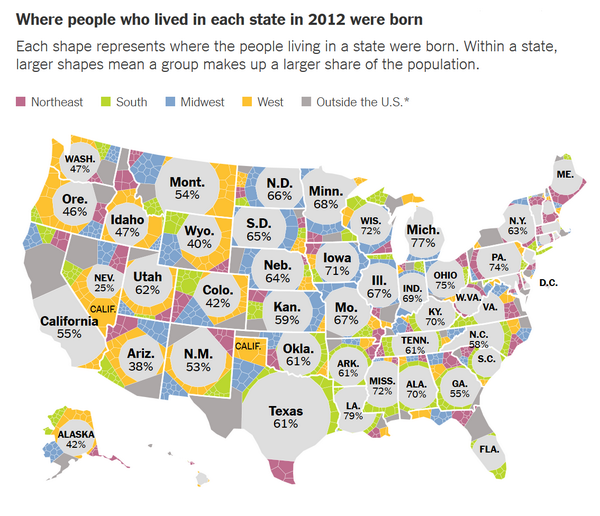Here are 2 visualizations from Liz Fosslien blog that depict the effect of handguns on murders. First chart shows murders per 100,00 people of European nations that banned handguns compared to the nations that have not banned. The second graph shows the relation between
Audience and the intent – The charts is intended for general public. The intent is not clear but the chart portrays that the murder rates are higher in countries that have banned handguns. Additionally, a simplistic interpretation would claim that banning handguns is futile, and may even have an adverse impact on murder rate. The second chart conveys that possession of firearms is a potential reason of increased homicide rates.
Critique
Validity : There are several questions regarding the validity of what is shown in chart 1. Europe has 44 countries so showing the murder rates of only a selected number of countries seems to be an attempt obscure the comparison rather than to reveal anything.
Deceptive : Chart1 is a snapshot at a given point in time and does not reveal anything about the causality. What if the case was such that, due to the high violence the countries had banned handguns. If so, then the chart is comparing apples to oranges because the countries with handgun ban is a self selected group. The current country selection is clearly biased by the omission of significant countries like the United Kingdom since UK is one of the larger examples of a country where handguns were allowed but are no longer allowed.
Unclear grouping : It is not clear how the countries are ordered within each group in chart1. Certainly, the effect of putting Russia last in the ‘Handguns banned’ area, right next to the very-low Poland data point, has the effect of heightening the contrast between the two groups.
Incomplete data: The bubbles in chart 2 does not give any detail about what are the other countries being considered. Also, there is an outlier similar to USA with higher homicide rate and lower firearm ownership. This makes the analysis much harder because the U.S. is really in a class of its own and when if compared to other countries, countries with similar values for per capita income etc have to considered.
Betterment of representation and analysis –
For chart1, compare the murder rates over time within each country. Also plot violent casualties due to handguns so that handgun usage for violence is captured in the statistics. Also, create a chart such that in addition to capturing murder rates over time, the chart also depicts the violence rates before and after handgun ban. As mentioned, include all the countries in Europe to have a holistic view such that the relevant details are not obscured. This before and after comparison removes a lot of the inherent differences among countries and directly addresses the question. As far for chart 2 is concerned, the scatter plots are a good way to show to show visualization involving two dependant variables (bivariate distributions) but a better way would be consider countries with similar per capita income, education levels and development index rather than comparing with underdeveloped countries. Also each bubble has to show the corresponding country name.


